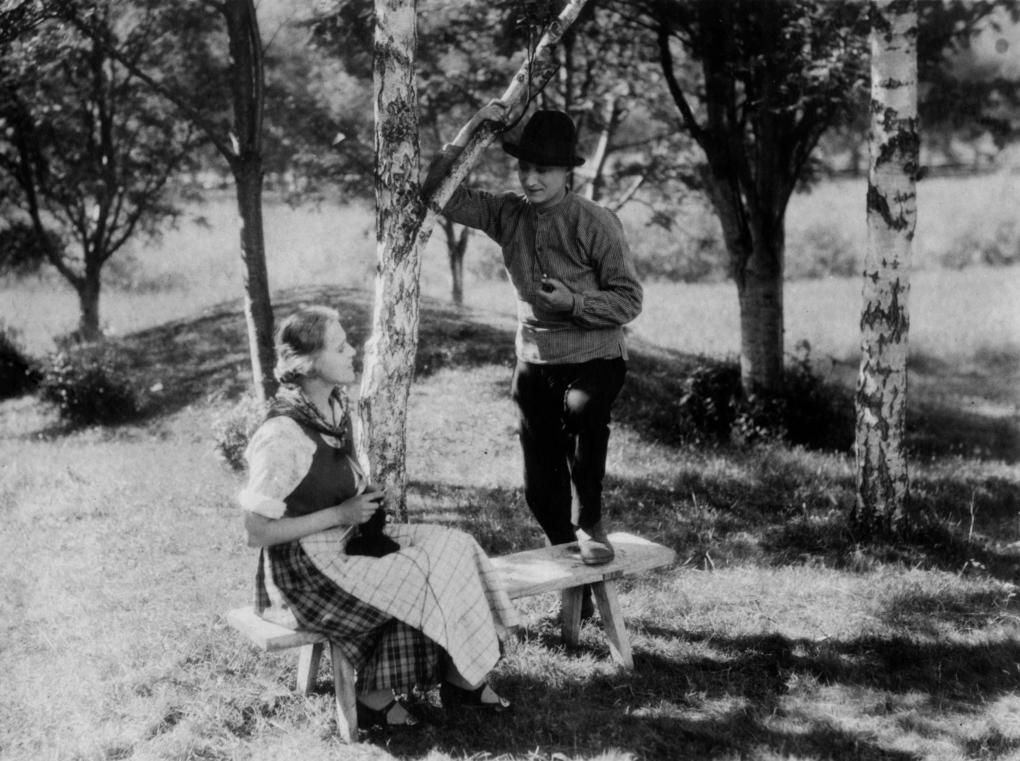In the summer of 1925, Dreyer was in Norway shooting The Bride of Glomdal (1926) for Victoria-film. The film was based on a short novel of the same name from 1908 by the Norwegian author Jacob Breda Bull (1853-1930). Dreyer was actually supposed to have adapted a play by Bjørnstjerne Bjørnson, En Fallit [A Bankruptcy] (1874), but once he arrived in Norway that turned out to be too demanding an endeavour, because the film had to be shot during the summer holiday. The actors were available only during their time off from the theatres. Hence, Dreyer suggested Bull’s short novel as an alternative to Bjørnson. In an interview published on the day of the Danish premiere, Dreyer says that the time pressure he was under compelled him, for the first and only time in his directing career, to be loose about his preparations: "The film had to be made on the spot from day to day without a script” (Berlingske Tidende, 15 April 1926). The film was more or less improvised directly from the printed pages of Bull’s book, though Dreyer also worked from a list of scene breakdowns. This list also integrated certain plot elements from another short novel by Bull, Eline Vangen (1906).
Bull, best-selling author
The writer who had won Dreyer’s affection was a popular Scandinavian favourite at the time. As the Fjeld-Ljom newspaper reported on 2 January 1914, Bull was the most widely read author in Norway in 1913. His novel Lys Hævn [Fair Revenge] (6,350 copies sold) outperformed Knut Hamsun’s Børn av tiden [Children of the Age] (6,000 copies sold).
The article also reveals that the two books were bestsellers in Denmark as well, though there Bull was somewhat less popular than Hamsun. Clearly, the two works (Eline Vangen included) on which Dreyer based the film were among Bull’s most popular books. The year after the film opened, 25,000 copies of Glomdalsbruden had been printed in Norway, and the book had been translated into Danish, Swedish, Finnish and German. By December 1926, Eline Vangen had been printed in 24,000 copies in Norway and translated into Danish, German and Russian. Eline Vangen was Bull’s big popular breakthrough, and in the following years there was barely another Norwegian writer who could beat his sales.
Folk-life tales, heroic novels and Neo-Romantic showdowns
In terms of literary history, Bull is in many ways characteristic of the period in which he had his breakthrough. This period, known in Norway as Neo-Romanticism (the corresponding movement in Denmark is known as Symbolism), came out of a neo-religious reaction in the 1890s to the naturalistic realism of the decades before. A theology graduate (though his understanding of Christianity was so liberal it prevented him from serving as a minister in the Church of Norway), Bull his whole life remained sceptical about, and in periods even outright rejected, the Darwinist view of nature and humanity. However, his realistic descriptions of peasant life in tiny Norwegian villages with their occasional peppering of social criticism point in the opposite direction, making him instead appear as a representative of the more politically and materialistically founded Folk Realism of the early 20th century. This split marks his extensive literary output, which can be said to fall into three parts that are not chronologically distinct and thus cannot be regarded as phases in a progressive development:
1) A prodigious number of folk-life depictions, realistic peasant tales from the Rendalen valley, with occasional hints of social indignation, though generally marked by plain, Christian moralising.
2) A number of historical epics in the Romantic tradition, primarily about Norwegian folk heroes, even though in the 1880s he did write a rejected, never published play about Joan of Arc. Dreyer, however, is unlikely to have heard about it.
3) A small number of political works with a clear tendency, in which he has a Neo-Romantic showdown with Naturalistic thinking. His early plays from the 1890s, notably Uden Ansvar (1890) and Alvorsmænd (1891), were a crusade against urban Norwegian intellectuals. These works more generally represent what could be called a classic moralistic conservatism.
As indicated, it is Bull’s depictions of folk life that have ensured him a (however minimal) place in literary history. In these works, he can be best defined as "a moralising folk realist with a sporadic eye for social injustice." This conceptual premise characterises Glomdalsbruden and Eline Vangen, though social indignation here has receded into the background.
By Morten Egholm | 22 May 2010
